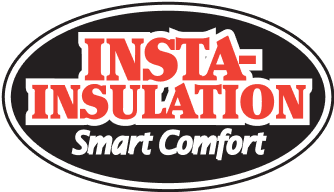Eliminating the Threat, One Attic at a Time
We all know that moving insulation technology forward is good for the economy (both globally and personally). We also know that it’s good for our ecology. But beyond climate change, there are other threats associated with early attempts to ease the pain for pocketbook and planet by installing insulation.
Vermiculite-Asbestos Insulation: Dangers & Disease
Certain types of vermiculate insulation contain asbestos. According to the United Nations World Health Organization (WHO), approximately 107,000 people die each year from asbestos related lung cancer, mesothelioma and asbestosis resulting from exposure to asbestos.
Mesothelioma: a rare cancer of the lining of the chest or abdominal cavity
Asbestosis: a scarring of the lungs that makes breathing difficult
This is serious business. Health Canada specifically defines the nature of the vermiculite threat.
“Vermiculite is a mica-like mineral mined around the world and used in a variety of commercial and consumer products because it is fire-resistant and has good insulation qualities. Of concern is vermiculite ore produced by the Libby Mine in Montana from the 1920’s to 1990. It was sold as Zonolite® Attic Insulation and possibly other brands in Canada during that time.
Vermiculite from the Libby Mine may contain amphibole asbestos. The Libby Mine supplied the majority of the world market in vermiculite-based insulation.”
While not all vermiculite products produced before 1990 contain amphibole asbestos, Health Canada suggests it is reasonable to assume “in the absence of evidence to the contrary” that older vermiculite insulation contains amphibole asbestos.
Vermiculite has a light-brown or golden pebble like appearance and homes built before 1995 are at greater risk. Start your research with these simple facts. If you are concerned, contact a professional contractor to conduct further testing.
Addressing the Vermiculite-Asbestos Threat: What Should I Do?
1. Assess whether you have been exposed and act accordingly.
Asbstos-related ailments develop over a period of prolonged exposure. If you suspect you may have been in contact with asbestos fibres
1. Contact your health care provider
2. If you are a smoker or are around people who smoke, stop smoking immediately and avoid secondhand smoke. Smoke and other airborne particles combine with asbestos to greatly increase the chance you could develop lung cancer
2. Ensure vermiculite-asbestos insulation remains undisturbed
Asbestos fibres pose a risk when they become airborne and are inhaled into the body through the respiratory system. If you suspect you may have vermiculite insulation, the first thing to do is ensure that is not disturbed in a way that will cause the asbestos it may contain to become airborne and circulate throughout your environmental envelope via your HVAC system.
Erring on the side of caution makes sense in this regard as well. Wildlife inhabitants, heating and cooling fans and vents, a leaky roof or even an open window on a breezy day can stir installation and cause it to be transferred into the air you breathe.
Do not use your attic for storage and do not enter your attic for any reason. Even common dust masks are no defense against asbestos fibres.
If you suspect you may have vermiculite-asbestos insulation in your walls. It is a good precautionary measure to seal any cracks, holes or openings that would allow asbestos fibers to enter the envelope. This means calking around windows, doorframes, baseboards and electrical outlets. This is a stopgap effort until you can arrange to have the insulation removed. Which brings up a very important point.
MOST IMPORTANTLY: Never attempt to remove the vermiculite-asbestos insulation yourself.
3. Contact a professional, certified contractor to remove the vermiculite-asbestos insulation.
Because of the dangers associated with airborne asbestos fibres, there are stringent guidelines to ensure the safe, proper removal of vermiculite-asbestos insulation.
Only a professional contractor, trained and certified in its proper removal and who has invested in the appropriate technology, equipment and training, should undertake this kind of project.
Proactive is Better than Reactive
Unfortunately, vermiculite-asbestos insulation is one of those issues no one thinks about until they have to. Most commonly, it rears its ugly head when home renovations are being planned – or worse – are already underway. This is extremely problematic for a few reasons. 1) Work that has started may have disturbed, and rendered airborne, vast amounts of dangerous amphibole asbestos fibres; and 2) The costs associated with bringing in professionals removal technicians midway through a renovation will be much greater than they would have been before the renovations were started.
In the case of home renovations the point is clear: do the vermiculate insulation test and removal BEFORE undertaking renovation projects.
And here is food for thought. We often undertake home renovations to ensure the comfort, safety, economy or marketability of our home. Eliminating the threat of vermiculate insulation addresses all of these things much more directly than whatever the renovation you are planning ever could.
Accurate Information is Key
Whether you are concerned about the health impact, looking to undertake a renovation, or are simply coming to understand the energy, environmental and economic benefits of upgrading to better home insulation products, be sure to consider vermiculate testing and removal as part of your plans.
As a certified vermiculite-asbestos removal contractor, Insta-Insulation can help put a together a safe, affordable, efficient plan that fits the unique situation of your home.
To assess your specific situation and develop a specific, cost-effective strategy, contact one of our vermiculite assessment and removal specialists today.



